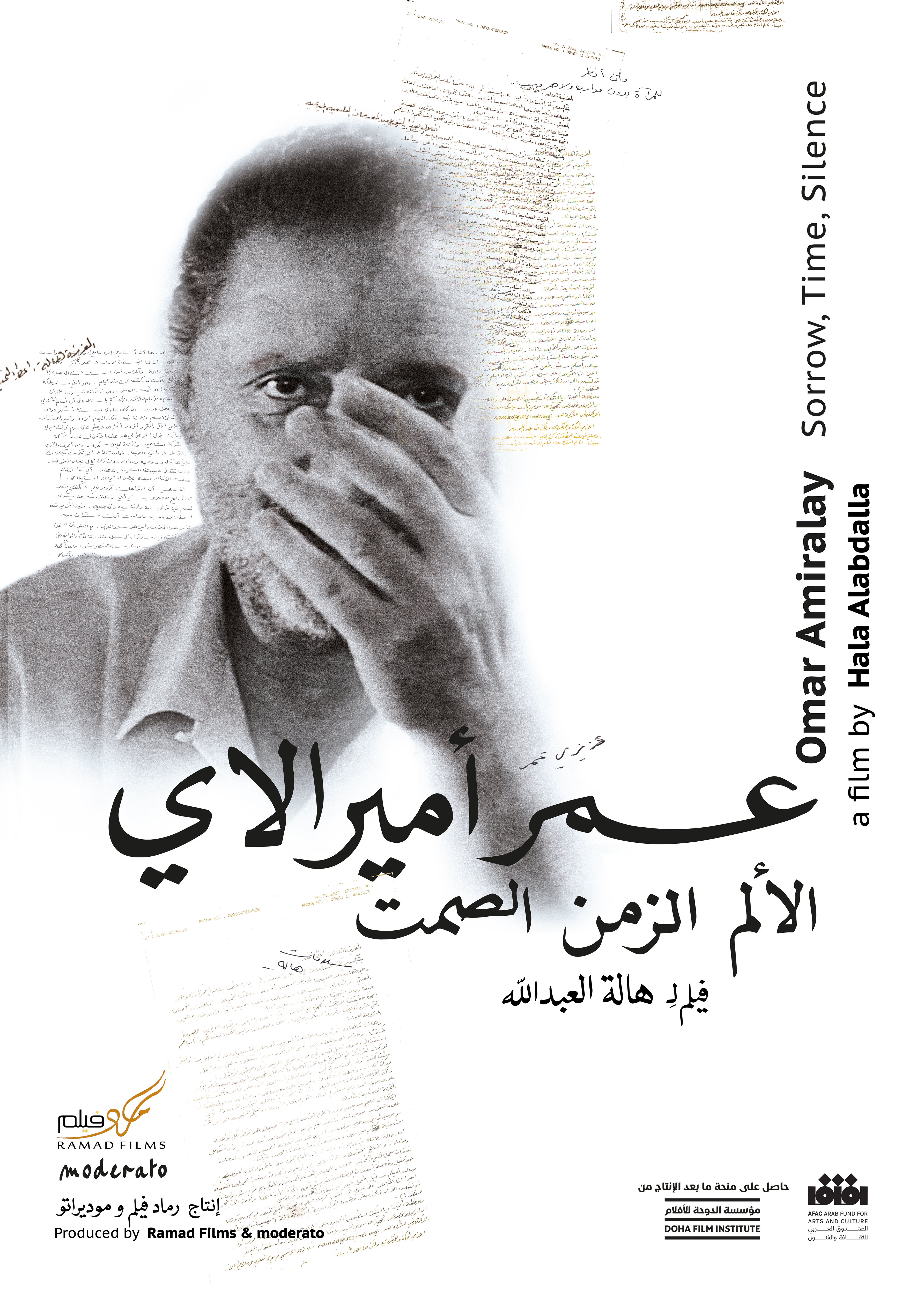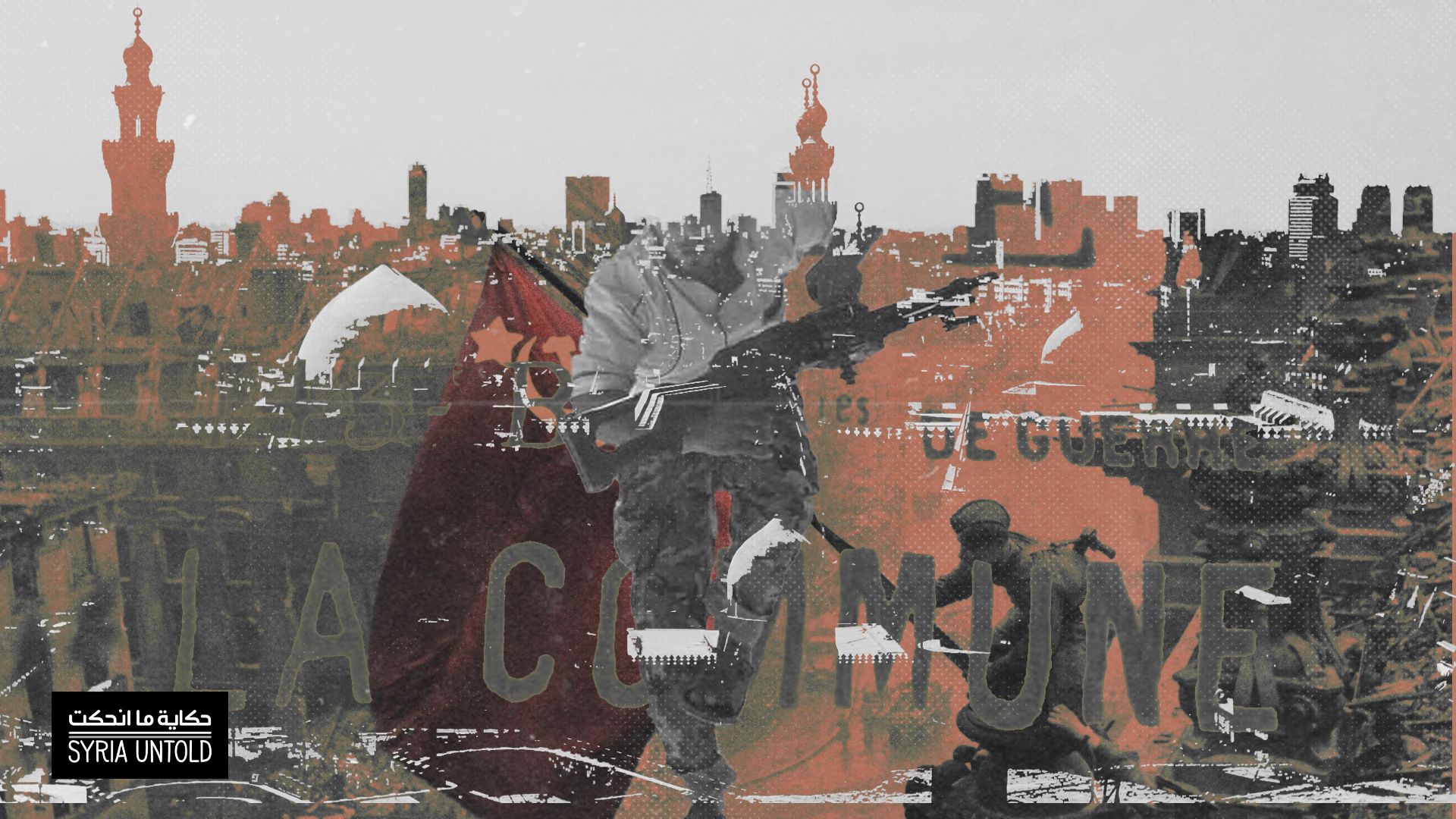First published in French in 'Les Cahiers d'Aflam' in the frame of the Omar Amiralay retrospective organized by Aflam festival in 2023. Now, we are publishing the text at SyriaUntold in English and Arabic.
A moving camera, a shaky image on a road somewhere, and a voice reading out to us what seems to be a letter. It’s a letter to Omar Amiralay from his colleague and friend of several decades, Hala Alabdalla. The voice appears to be sending Omar a message in his absence, or maybe painting a picture for us of Omar as a “rebellious director”, as he’s later described in the film.
The image then shifts to Omar’s face. He asks why Hala wants to make a film about him. She later tells me in a phone call: “It originated as a film about Omar and his relationships with women, especially his mother. I was interested in this personally as well as generally, because of his impact and important position in society. There was an aura surrounding Omar, one that others could see.”
Alabdallah wanted to create a film with a feminist approach, through drawing a portrait of Omar Amiralay without discussing his films directly. But his sudden death in February 2011 prevented her from finishing what she had started.
About a decade after the original shooting, Alabdalla returned to her raw material to make something new. She relied on those two lengthy interviews the two had done at Amiralay’s home in Damascus while he was caring for his sick mother, who died just a few months afterward.
The resulting film was built on those initial interviews, as her original plan had been to shoot the principal photography would take place later. And so the film resolution was low, the shooting quick and unscripted and the audio somewhat poor. But those two times Omar sat in front of the camera, he lavished Hala with a surprising amount of information. He spoke of belonging, of having wanted to be a military officer and not a filmmaker. He imagined he might make a good officer with a rebellious spirit, but the cinema took him away from all that. He spoke about his mother and his relationship with her, about her illness, which played a central role in the film. He told Hala about the cinema and about his films.
Hala’s film is important because it tells Omar Amiralay’s story in his own voice, as if he were writing down his memories, this time by speaking in front of the camera. But at the same time, it seems there is yet another film: Hala’s film. Her voiceovers, the clips that she uses from Omar’s films, show yet other, one that conveys a letter written by Hala to Omar.
It’s as if the film is actually two films: one that talks about Omar, his work, thoughts and life, and another that tells of Hala’s relationship with Omar, their conversations and shared history, as well as how she misses him.
Omar Amiralay: Sorrow, Time, Silence belongs to the old school of Syrian documentary cinema from before 2011, if that categorization makes sense, the cinema whose foundations were laid by Omar Amiralay himself, as well as by other directors such as Mohammad Malas and Ossama Mohammed. Hala Alabdallah was also an integral member of this school.
The films of this era were distinguished by their tender-heartedness and, tech-wise, long shots, disinterest in audio and the bits and pieces linking the main scenes, like clips of the window, the rain, graves and protests. Hala did not distance herself from this background in her latest film But she did tell me, by phone: “My work is not like that of Ossama [Mohammed] and Omar [Amiralay]. My way of thinking about cinema is different. The way I think about adventure and freedom is different. I believe in the moment, without searching for perfection. Perfection comes to me by way of feeling the shot.”
Hala is remembering her friend Omar through the film, and yet she directs it towards an audience watching it 10 years after his death. She shows her longing for her friend, to an audience she doesn’t know, in different cities. She tells them in her cinematic language that she thinks of her audience in a different way, that she thinks of what she wants to convey to them rather than what they want from her. This is how Hala has thought throghout her life as a filmmaker, and this is how she leaves behind her fingerprint on Syrian cinema, a mark that won’t wear away easily with time.









